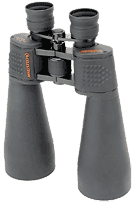|
1
|
Mercury 1.6° NNE of Spica (15° from Sun, evening sky) at 14h UT. Mags. -0.4 and +1.0.
|
|
3
|
Venus 0.15° SW of Regulus (40° from Sun, morning sky) at 5h UT. Mags. -4.1 and +1.3.
|
|
4
|
Moon near the Pleiades (morning sky) at 11h UT.
• Pleiades (star cluster) (Wikipedia)
|
|
5
|
Moon at apogee (farthest from Earth) at 1h UT (distance 405,160 km; angular size 29.5').
|
|
5
|
Mercury 3.1° SSW of Saturn (17° from Sun, evening sky) at 5h UT. Mags. -0.3 and +0.7.
|
|
5
|
Moon near Aldebaran (morning sky) at 8h UT.
|
|
5
|
Moon very near Jupiter (116° from Sun, morning sky) at 22h UT. Occultation visible in southernmost Australia and the Southern Ocean. Mag. -2.6.
• Occultation of Jupiter (US Naval Observatory)
• Occultation of Jupiter (IOTA)
|
|
7
|
Moon very near Ceres (morning sky) at 3h UT. Occultation visible in south Atlantic, southern tip of Africa. Mag. +7.4. Telescope required.
• Occultation of Ceres (US Naval Observatory)
|
|
8
|
Last Quarter Moon at 7:33 UT.
|
|
12
|
Moon near Venus (morning sky) at 16h UT. Mag. -4.1.
|
|
15
|
New Moon at 12:02 UT. Start of lunation 1111.
• Lunation Number (Wikipedia)
|
|
17
|
Moon at perigee (closest to Earth) at 1h UT (360,672 km; 33.1').
|
|
17
|
Moon very near Mercury (22° from Sun, evening sky) at 1h UT. Occultation visible in Alaska. Mag. -0.1.
• Occultation of Mercury (US Naval Observatory)
|
|
18
|
Moon near Mars (43° from Sun, evening sky) at 14h UT.
|
|
18
|
Moon near Antares (evening sky) at 17h UT.
|
|
21
|
Orionid meteor shower peaks. Arises from the debris field of Comet Halley. Active from October 2 to November 7. Produces very fast (66 km/sec), generally faint meteors (20 per hour).
Observe in the pre-dawn hours of October 21st; radiant located near OrionŐs club asterism. Favorable viewing this year for this major shower.
• Orionids (Gary Kronk)
• Meteor Shower Calendar (IMO)
|
|
21
|
Mars 3.6° N of Antares (evening sky) at 1h UT. Mags. +1.2 & +1.0.
|
|
22
|
First Quarter Moon at 3:33 UT.
|
|
26
|
Mercury at greatest elongation, 24° east of Sun (evening sky) at 22h UT. Mag. -0.1.
|
|
29
|
Full Moon at 19:49 UT.
• Full Moon Names (Wikipedia)
|
|
All times Universal Time (UT). USA Eastern Daylight Time = UT - 4 hours.
|






